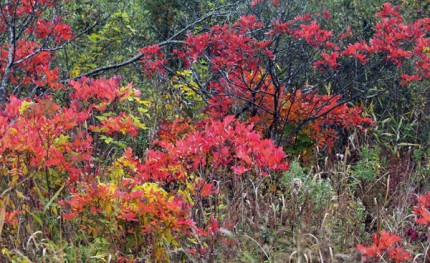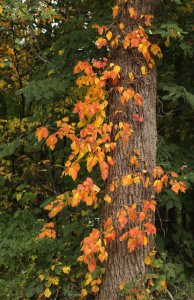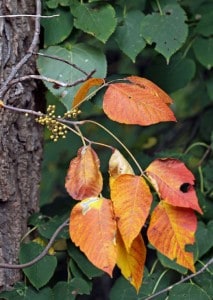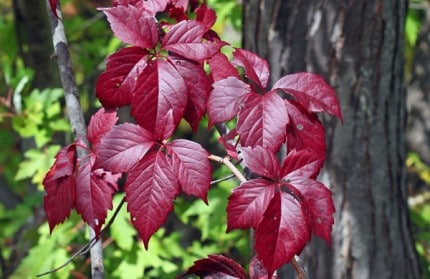

(Chelsea Update would like to thank Tom Hodgson and the Waterloo Natural History Association for the photos and information in this story.)
Collecting and pressing colorful leaves can be an enjoyable autumn activity.
When pressed and laminated in plastic, many will keep their color for years, especially those with bright red pigment. Unfortunately some of the first to turn color each year may leave a lasting legacy of a different kind. Picking those leaves could leave one with a rash that could last a week or two.
Poison ivy and poison sumac provide some of the earliest fall color and are at their peak right now. Poison sumac leaves turn a flaming orange to candy-apple red. Many area wetlands appear to be on fire with the bright colors of poison sumac.
There are four species of sumac in our area, but only the poison variety will cause the rash but all sumacs turn bright red or orange in early fall. So how does one separate poison sumac from the harmless species? First, poison sumac only grows in wetlands. The other species only grow on ground that is high and dry. So to avoid the poison variety, stay out of the swamps.
Poison sumac and poison ivy also produce loose clusters of creamy white berries. The other sumacs produce tight clusters of fuzzy red berries. The berries on all species of sumac are visible at this time of year.

Poison ivy grows in a variety of habitats, but does best in partial shade. It may grow as a small plant on the ground, or as a climbing vine. Right now poison ivy leaves are a bright orange yellow. Its leaves are always in groups of three, each leaf has a few scattered teeth or notches along its margin.
The old saying “leaves of three, let it be” is good to remember.
Another common climbing vine that is now in full color is Virginia creeper. Its leaves are a deep red to dark purple. Virginia creeper has five leaves in a cluster. Its dark blue berries are also visible this time of year.
By the way, humans seem to be the only ones who are allergic to poison ivy and sumac. Deer and other animals eat the leaves, and many song birds feed on the berries.
This is shaping up to be an excellent fall color season. Collecting fall leaves will not harm the trees, as they will soon be on the ground anyway. Once they fall to the ground they will be quickly attacked by bacteria that cause their colors to fade, and will turn most back into soil within a year. That’s nature’s way of recycling and assuring that nutrients will be available for new growth. In the meantime, the bright colors are there for all to enjoy.





